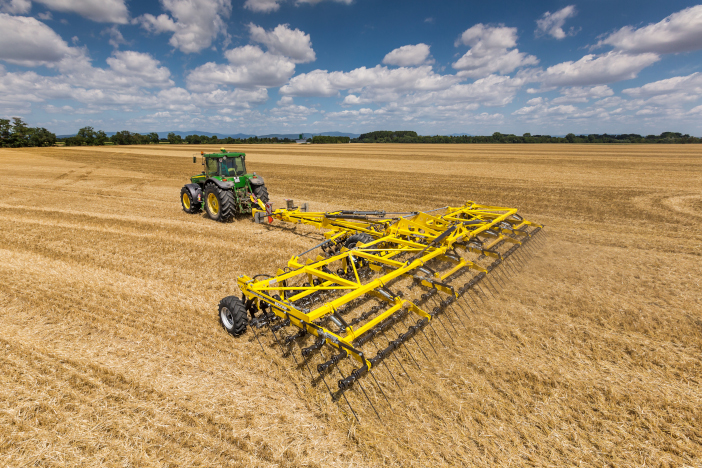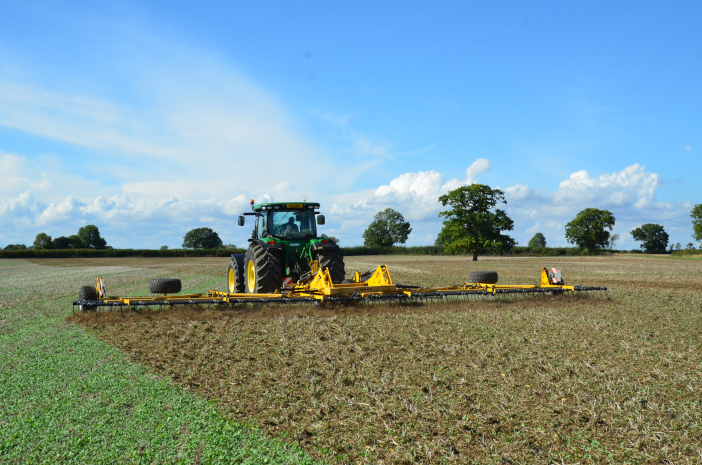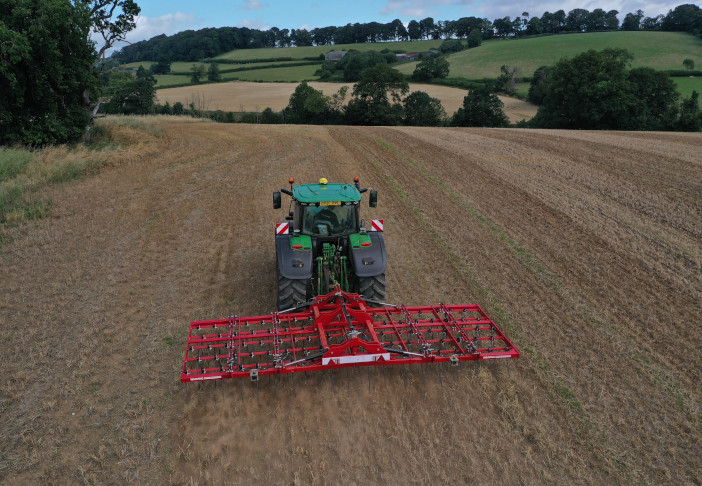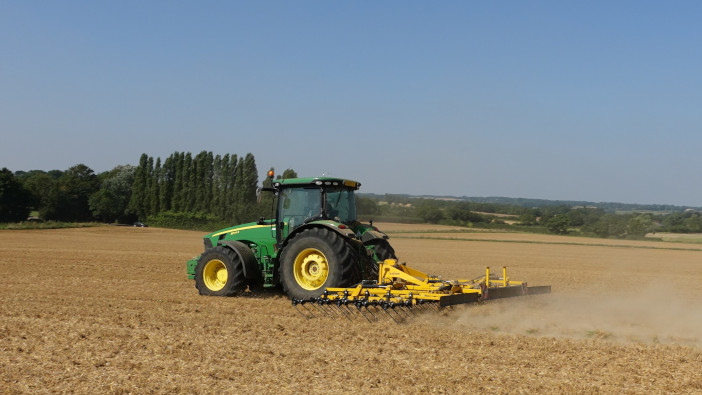As soon as the crop is off the field, work starts on creating a seedbed for the next in the rotation. While there is a focus on reducing passes, high-speed, low compaction runs with a straw harrow can bring many benefits.
For those who chop their straw to add organic matter to the soil, running a straw harrow can spread it evenly. This encourages the breakdown of the by-product.
While doing this, the implement creates a shallow tilth to encourage the germination of weeds and volunteers – these can then be controlled by additional passes with the straw harrow.
Pest control is also handled. By breaking up the straw, slug eggs are exposed or destroyed, reducing the risk of crop damage next season and reducing the grower’s reliance on slug pellets, which can be harmful when spread near watercourses.

Bednar – www.bednar.com
Two ranges of straw harrow are manufactured by Bednar. The semi-mounted Striegel-Pro PN requires between 80hp and 220hp, available in working widths from 6m to 9m. Five rows of tines are mounted on the machine, with the angle of the rear two rows adjusted mechanically and independently from the first, hydraulically adjusted three rows.
The trailed Striegel-Pro PE has a 12m working width for tractors from 230hp. Comprising six rows of tines, with the latest two independently adjusted, it also features independent suspension of each of the four sections for consistent ground following across the working width.
Across the straw harrow range, front mounted tools including a levelling board and cutting discs can be mounted, as can the company’s Alfa seeding unit for establishing cover crops, small seed crops or micro granules in one pass.

Claydon – www.claydondrill.com
Claydon has been developing its straw harrow range since 2007, launching the first model in 2010. The company now offers five models, with mounted units available in 3m, 7.5m and 9m working widths, and 12.5m and 15m trailed machines.
Reportedly operating at speeds between 15kph and 25kph for hourly outputs of up to 20 hectares, the straw harrows are mounted with pairs of 14mm tines (with the option of 16mm tines) across the working width. The largest 15m unit has 120 pairs of these tines, and the range features hydraulic adjustment of the tine angle suit working conditions.
All but the rigid 3m version hydraulically fold to less than 3m for road transport and power requirements start from 60hp for the smallest machine, increasing up to 300hp for the largest trailed unit.

Weaving Machinery – www.weavingmachinery.net
There is currently just one model of straw rake in the Weaving portfolio, with plans to extend this later in the year. The 7m machine weighs 1,500kg and requires 140hp at the front, with a recommended working speed between 15kph and 25kph.
It comprises five rows of heavy-duty, 16mm tines with hydraulic tine angle adjustment. These are cushioned with an accumulator system. The quick-fit tines are spaced at 75mm for a total of 12 tines per metre, with 500mm between each row to allow large amounts of material to pass through the unit.
For transport, it folds down to 2.8m and is completed as standard with an LED road light board.


